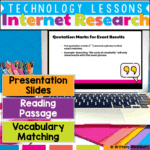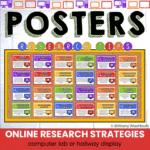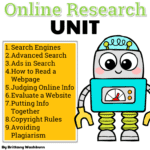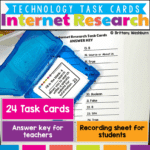Using Internet Archives in the Classroom
Internet archives serve as invaluable resources, preserving the transitory nature of web content and offering a window into the past. By tapping into these digital repositories, educators can enhance their curriculum, foster critical thinking skills, and provide students with unique access to historical materials that might otherwise be lost. As we navigate the evolving landscape of education and technology, understanding how to effectively utilize internet archives can empower both educators and learners to engage with history in meaningful and transformative ways.
Using Internet Archives in the Classroom
What are internet archives and how do they work?
Internet archives are digital collections that store historical web pages, documents, and other content from the internet. They work by capturing and preserving online material at specific points in time, allowing users to access and explore past versions of websites and digital resources. They serve a dual purpose: to safeguard our ever-evolving digital history and to provide a treasure trove of resources.
How can educators use internet archives in their teaching?
Educators can incorporate internet archives into their teaching by using them as primary sources for research projects, facilitating discussions on historical events, or creating assignments that encourage students to analyze changes in web content over time. They can also leverage archived multimedia resources to enrich lesson plans across various subjects.
Enhancing Research Skills
In a world overflowing with information, developing strong research skills is as crucial as knowing how to ride a bike. By utilizing internet archives, students learn to discern credible sources, analyze data, and critically evaluate content from different eras.
What skills can students develop by using internet archives?
Using internet archives helps students develop critical research and analytical skills as they evaluate sources, understand context, and engage with historical content. It also enhances digital literacy by teaching students how to navigate and utilize online resources effectively, fostering a deeper appreciation for the significance of preserving digital history.
Popular Internet Archives
Internet Archive
This is a non-profit library of millions of free texts, movies, software, music, websites, and more. It is comprised of two main facets.
Archive.org and Its Resources
Archive.org is the granddaddy of all internet archives, boasting millions of free resources including books, films, music, and software. It’s a one-stop-shop for digital content that can breathe life into classroom discussions. Need a primary source for that history report? Or a vintage film to spice up your literature curriculum? Archive.org has got your back (and a whole lot more)!
The Wayback Machine
Users can enter any URL and discover how that website looked at various points in time. It’s a fantastic tool for studying the evolution of online content, web design trends, and even societal attitudes. Want to see how your favorite online store has transformed over the years? Go ahead, take a stroll down memory lane!
National Archives
Visit the National Archives without leaving your home or school. Teach with documents using our online tool. Explore primary sources. Discover fun and engaging teaching activities. Create your own online or print activities for your students! Civics for All of US is the new education initiative from the National Archives that promotes civic literacy and engagement.
The Digital Public Library of America
Their Primary Source Sets that explore topics in history, literature, and culture, such as the Great Migration and the War of 1812. In the Primary Source Sets, primary sources are supplemented by teaching guides that help students develop critical thinking skills. In addition to Primary Source Sets, use our Online Exhibitions to investigate important stories about the United States through sources and accompanying narratives.
Europeana
This archive shares and promotes Europe’s digital cultural heritage to be used and enjoyed by everyone for learning, for work, or just for fun.
Integrating Internet Archives into Curriculum
Subject-Specific Applications
From history to science, internet archives can enrich many subjects. History teachers might have students analyze how public opinion on major events has shifted over time by reviewing archived news articles. Meanwhile, art teachers can showcase the evolution of artistic movements through archived websites and online galleries.
Project-Based Learning Opportunities
Internet archives are perfect for project-based learning. For instance, students can create multimedia presentations based on their discoveries in the archives or develop projects that compare past and present perspectives on social issues. Let them unleash their creativity and interpret history in their own way.
Successful Classroom Implementations
One remarkable reported case involved a history teacher who used the Internet Archive to bring the past alive during a unit on World War II. Students accessed old war propaganda films and newspapers, analyzing the media’s impact on public sentiment. They then collaborated to create their own historical documentaries using archived footage, becoming modern-day digital historians. The assignment not only developed their research and analytical skills but also led to passionate discussions about contemporary media and its influences.
Best Practices for Educators
Using Internet archives in the classroom can feel like opening Pandora’s box—so much information, so little time! Here are some tips to help educators navigate the treasure trove effectively:
- Set Clear Objectives: What do you want your students to learn? Define specific goals to keep your lessons focused and purposeful.
- Foster Digital Literacy: Teach students how to sift through archives, evaluate sources, and corroborate information. It’s like giving them a metal detector for all that historical gold hidden online!
- Encourage Collaboration: Use group projects to promote teamwork. After all, many hands make light work, and who doesn’t love a good brainstorming session over pizza?
- Embed Technology: Use tools that enhance the use of archives, such as digital storytelling apps and presentation software, to make learning visually engaging and interactive.
Potential Impacts on Teaching and Learning
Imagine students not only consuming content but also actively contributing to digital archives by creating and sharing their own research. This shift could foster a more collaborative and inclusive learning environment, empowering learners to take ownership of their education. As we move into an ever more digital future, teaching with these resources can equip students with the skills they’ll need to thrive as well as turn them from passive consumers into active digital citizens.
Contributing to Internet Archives
Secure Disappearing Educational Resources
Do you have a beloved educational website that will soon be no longer accessible? CS First users, for example, could have sustained access many of its lessons using these means.
Seek Guidance
How exactly do you contribute to an internet archive though? In many cases it’s a simple process explained in written form on the archive site you are using. However, if you need a helping hand you can often find a video guide, such as Uploading Overview Video for Archive.org.
Teaching Basic Research Skills
Interested in the concept of using an internet archive, but not sure your class is quite ready?
If you want to get your class started with basic research skills first, try one of these guides:
- Picture Books that Teach Students Online Research Skills
- How to Teach Online Research Skills to Elementary Students
- Teaching Students how to “Google It” to Learn Online Research Skills
- 3 Ways to Teach and Review Online Research Skills
Resources to Teach Research Skills
There are several resources in my shop to equip your classroom!


Final Tips
Leveraging internet archives in the classroom opens up a wealth of educational opportunities that can enrich the learning experience for students. By providing access to historical documents, web pages, and multimedia resources, educators can cultivate a deeper understanding of the past while encouraging critical analysis and research skills. Embracing these digital tools will not only enhance classroom engagement but also prepare students to navigate and contribute to an increasingly complex digital world. With thoughtful integration and a focus on best practices, internet archives can inspire curiosity and a lifelong love of learning.










